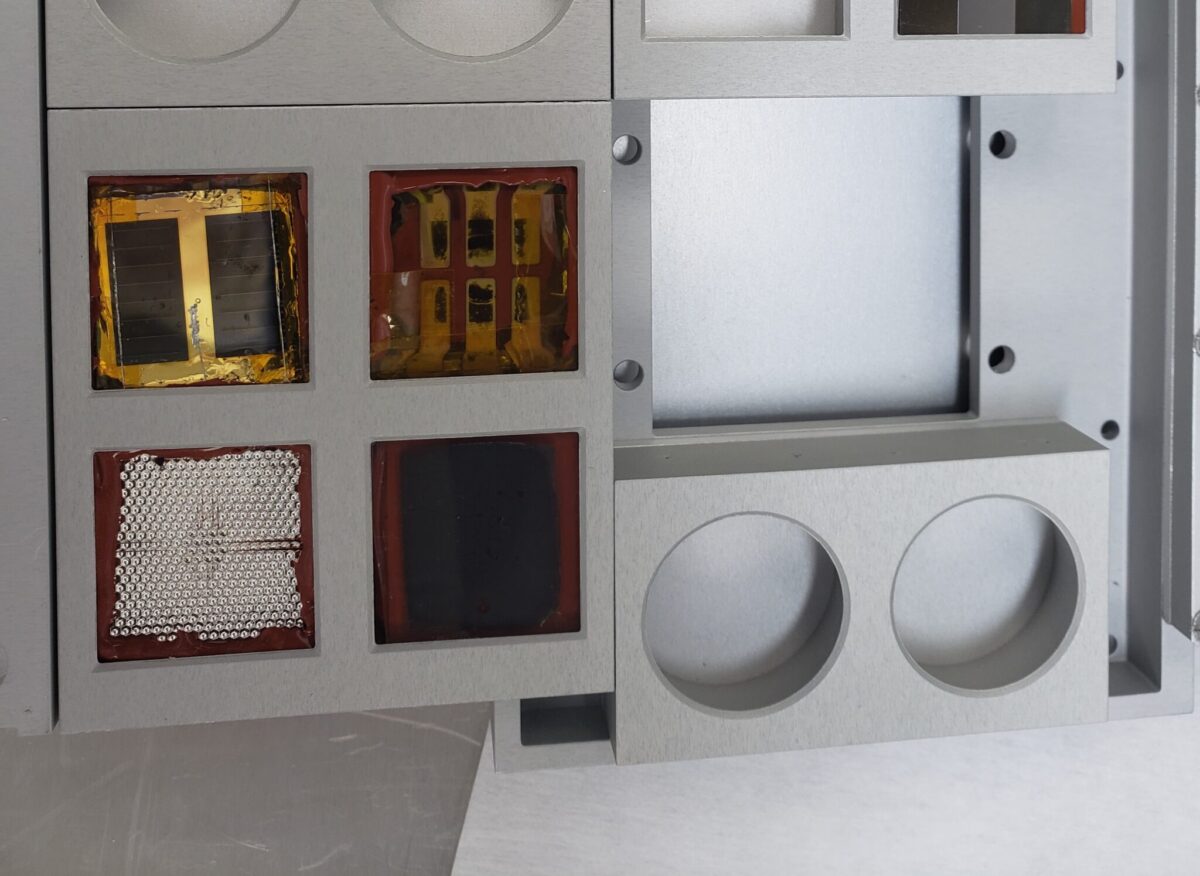From pv magazine Global
NASA has revealed the results of an experiment it conducted to assess the performance and durability of perovskite solar cells on the International Space Station.
The agency said that it tested a perovskite absorber over a 10-month period in order to assess its resistance to vacuum, extreme temperatures, radiation, and light stressors simultaneously.
“There is no ground analog, no machine that will do all of those crazy things to it at the same time quite like the International Space Station,” said researcher Lyndsey McMillon-Brown.
The scientists attached the film to the outer side of the space station and exposed it to space conditions from March 2020 to January 2021. It then returned to NASA’s laboratories on Earth and its status was compared to that of a reference device on the ground. The research group said the space-traveling perovskite cell’s sunlight-absorbing qualities were surprisingly restored when hit by solar light on Earth, while the reference showed stronger degradation when exposed to the same conditions.
“The perovskite film was still dark black after spending 10 months on the International Space Station, proving her team’s innovative solar cell material is suitable for possible use on future space missions,” said McMillon-Brown. “We don’t know exactly what about the space environment gave our film this superpower.”
Looking forward, the NASA team said that it will try to find out which specific parts of the space environment transformed the perovskite.
“Not only do they survive, but in some ways, they thrived. I love thinking of the applications of our research and that we’re going to be able to meet the power needs of missions that are not feasible with current solar technologies,” said McMillon-Brown.
The results confirmed earlier research showing that the lack of moisture and oxygen outside of Earth’s atmosphere is actually beneficial to perovskite cells, and that the cells could be more suitable for operation in space without any major changes. The group said that there is huge potential for improvements in terms of stability and lifetime, and that proving the cell for long-term operation in space will be the next research step.
This content is protected by copyright and may not be reused. If you want to cooperate with us and would like to reuse some of our content, please contact: editors@pv-magazine.com.








By submitting this form you agree to pv magazine using your data for the purposes of publishing your comment.
Your personal data will only be disclosed or otherwise transmitted to third parties for the purposes of spam filtering or if this is necessary for technical maintenance of the website. Any other transfer to third parties will not take place unless this is justified on the basis of applicable data protection regulations or if pv magazine is legally obliged to do so.
You may revoke this consent at any time with effect for the future, in which case your personal data will be deleted immediately. Otherwise, your data will be deleted if pv magazine has processed your request or the purpose of data storage is fulfilled.
Further information on data privacy can be found in our Data Protection Policy.